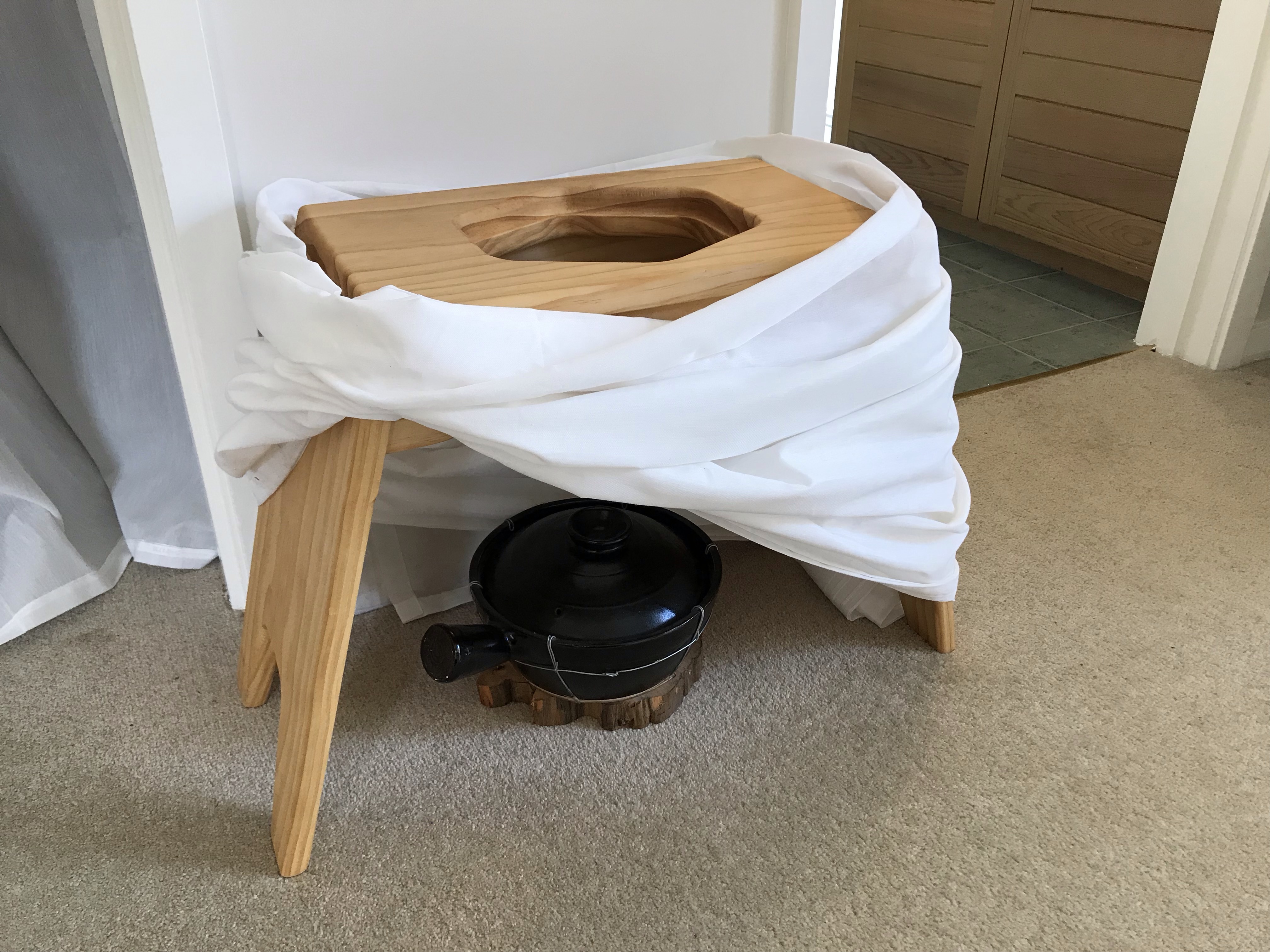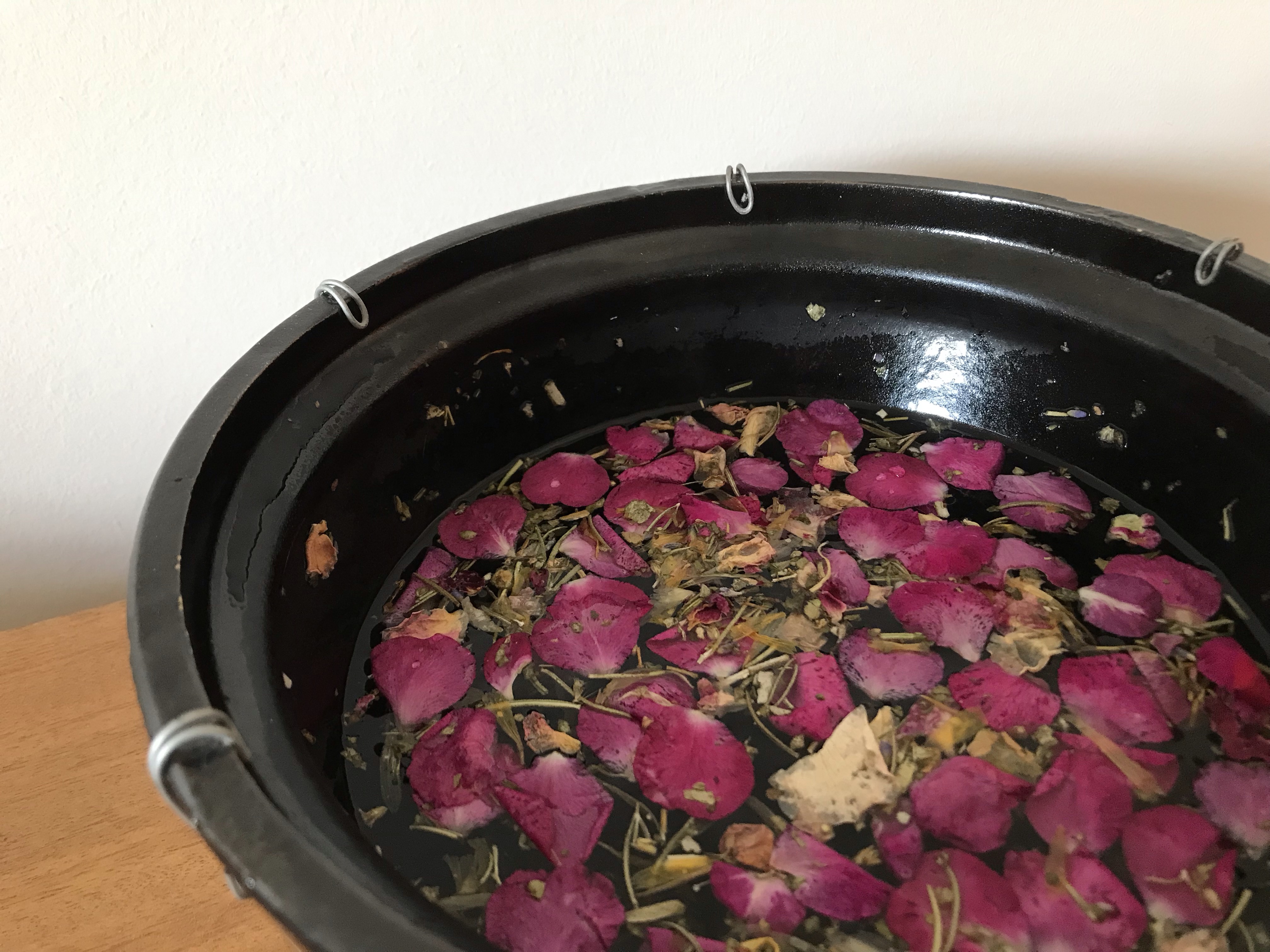Vaginal Steaming – Everything You Wanted to Know And Were Too Afraid To Ask
Maybe you read that Gwenyth Paltrow loves it. Perhaps you saw photos of Chrissy Teigen giving it a go. There’s a small chance you have a friend who has professed its varied benefits. Maybe you rolled your eyes.
Yep. We are talking vaginal steaming.
But before you discredit it as a ludicrous, crazy fad – let’s break it down a bit so you can make an informed decision whether or not it’s something you might want to add to your self-care practice.
So what’s actually involved?
Vaginal, or perineum steaming, involves positioning the area between your legs over a bowl of steaming water. Technically we aren’t actually steaming the vagina as that’s located on the inside. The vulva – including the clitoris, urethra and vaginal opening – as well as the anal opening and surrounding skin will come into direct contact with the steam.
Most people will use a cooking pot to boil water, and then dried or fresh herbs can be placed into the water to steep like a cup of tea. The mucous membranes in the perineum will absorb these herbal components so it is very important that only edible flowers or herbs are used in the steaming pot. Essential oils are not used as they are too potent.
Once you have a steaming pot of water you need to find a way to position yourself over it. It possibly goes without saying, but you need to remove your pants and underwear so that the skin is directly exposed to the steam. There are custom made steaming stools designed for this purpose. Essentially they are a stool with a hole cut in the top to allow the steam to reach the perineum while you sit on the top. However there are creative ways to make your own, such as an old chair or stool that has a removable section or hole cut in (hello op shop!) or an upside down milk crate with a clean toilet seat or towel folded on top to make a comfortable place to sit. Some women find they can straddle the legs of a dining chair lying sideways using a bit of padding to make it more comfortable. In its most simple form you can wrap the sides of the pot well with towels, place it next to a bed or couch, kneel over the pot and lean onto the couch or bed for upper body support. The recommendation is usually to steam for 15-20 minutes.

What actually happens if I decide to give steaming a go?
Vaginal steaming primarily brings warmth to the pelvic space. In turn this increases blood, nerve, lymph and energy flow to pelvis. The pelvis is at the centre of the body, and so many body functions also require blood, nerve, lymph and energy to flow effectively through this space. Vaginal steaming can work to reduce congestion in this area and support the movement of oxygen, hormones, nutrients, waste and nerve messages around the body.
While the mechanism is not understood, steaming also works to open the cervix and promote alignment of the uterus. In turn this supports the ease of natural rhythms to open when releasing menstrual blood, or holding while the uterine lining builds. It is important to note that vaginal steaming is not like a steam clean of the vagina or uterus. Our female bodies are not dirty or unclean and the vaginal steam has nothing to do with hygiene.
It’s not sounding too bad, but why would I consider using vaginal steaming?
Historically within many cultures, women have used vaginal steaming for a wide range of pelvic and menstrual challenges or to support general feminine wellbeing. As a practitioner, I see women continuing to receive these same benefits when they introduce steaming into their self-care routine:
- Menstrual challenges or imbalances – Whether we are talking painful periods, cysts, fibroids, irregular cycles, endometriosis or headaches, steaming can be a useful part of self-care to improve organ function and reduce or eliminate symptoms.
- Menopause – Difficult menopause can be due to the uterus struggling to empty for the final time, and hormonal imbalances can be worsened if blood flow around the body is not optimal. Herbs with mucilaginous, or moistening, properties can be chosen to support vaginal dryness that can be experienced at this time.
- Fertility – Steaming primes the cervix and uterus for conception and pregnancy, and improved fertility can be experienced as an outcome. When we view menstrual health as a vital sign for overall wellbeing, it makes sense that fertility is optimised when pelvic and menstrual health is brought into better balance.
- Depletion, holding and trauma – The pelvis is a physical as well as energetic space. We hold emotion and nurture in the pelvis, and imbalances between what we give and receive can show up as pelvic or menstrual health symptoms or pain. Painful experiences may also be stored in the pelvic space. Vaginal steaming can increase our awareness of the pelvic space, and offer a really gentle transition to being in our body especially if trauma is present.
- Prolapse and pelvic heaviness – Steaming can be a very therapeutic tool for nurturing the pelvic space and organs, and supporting improvement and healing of prolapse or related pain and discomforts.
- Painful sex – Difficulties with intimacy can be due to a pelvic injury or increased tension in the pelvic muscles. Steaming can be a useful tool to promote relaxation through the pelvic floor muscles and support healing of pelvic injuries.
- After birth – After birth we lose so much warmth from our body, both from the baby leaving our body and energetically as we experience the hormonal transition to mothering. Steaming can be used to bring warmth back into the body. Women also report that it supports the pelvic space to realign itself following the changes resulting from pregnancy and birth, and helps to balance their emotional wellbeing. There is currently a ‘Fourth Trimester Vaginal Steam Study’ underway to actually measure the reported benefits to uterine size (shrinking after birth), cervical closure, after birth contractions, tear recovery, blood flow, blood pressure, hormone levels and emotional state.
- General wellbeing – due to the world we live in, it is estimated that up to 85% of women experience their uterus being out of alignment and congestion in the pelvic space is common. Steaming can be used to gently bring the body back to its optimal function and then maintain this state.

Just in case you decide to try this at home…
Speaking to a vaginal steaming practitioner allows you to get a full assessment of your menstrual or pelvic health and any symptoms that are concerning. This includes individualised information about precautions or recommendations for when and how often to steam. A practitioner will also be there to check in and support you if you experience changes to your cycle, symptoms or vaginal discharge that are concerning to you. However, if you decide to try vaginal steaming by yourself there are some important things you need to know:
- Please do not burn yourself – the goal is to steam and not scald. If the steam coming out of the pot is too hot, give it a small amount of time to cool off. Also be aware of the heat in the pot itself, especially if you are kneeling over it or using another creative way to position yourself over the steam.
- Stay warm – it is important that you keep the rest of your body warm while you steam. Wear a jumper or dressing gown if needed. Put socks or a blanket on your feet. Check that there aren’t any cold drafts in the room you are using. After steaming make sure that you continue to keep your body warm for a period of time while the steaming experience consolidates in your body.
- Be gentle with yourself afterwards – you should not be steaming if you plan to exercise or need to be busy with work or home tasks immediately afterwards. Steaming before going to bed is ideal. Sometimes steaming can also bring about a strong emotional response, so again be aware and gentle with yourself.
- Unless you are following advice from a highly skilled practitioner, do not steam when you are bleeding (menstruation or after birth), if you have any infection in the pelvic space, if there is any chance you could be pregnant, or if you are using an IUD (Intra Uterine Device such as a Mirena).
- As steaming optimises uterine function there can be times when menstrual bleeding after steaming contains remnants of old blood. This may appear as dark blood, clots, mucous or gritty discharge as part of your regular bleed. Please consult with a suitable practitioner if you have any concerns about bleeding or discharge.
- Vaginal steaming is used to support fertility. Some women report that their bleeding time arrives earlier than expected – especially when they first start steaming – due to the uterus being ready and more able to empty. If you are not wanting to fall pregnant it is important that you carefully track your cycle and monitor for any changes.
Vaginal steaming is one of many techniques that form part of the Arvigo Techniques of Maya Abdominal Therapy®. In combination these techniques bring balance to the pelvic space, in particular the position of the uterus. In turn this works to optimise pelvic and menstrual health.
If you are curious to learn more about vaginal steaming and how it might work for you, please be in contact to book a free 20 minute phone call where you can ask any questions you may have. I offer a full initial consultation, as well as a shorter steaming focused consult, that will allow you to explore your pelvic, menstrual and emotional wellbeing. You will then be able to experience vaginal steaming for yourself and receive individualised suggestions for how you could use steaming in your self-care practice.
